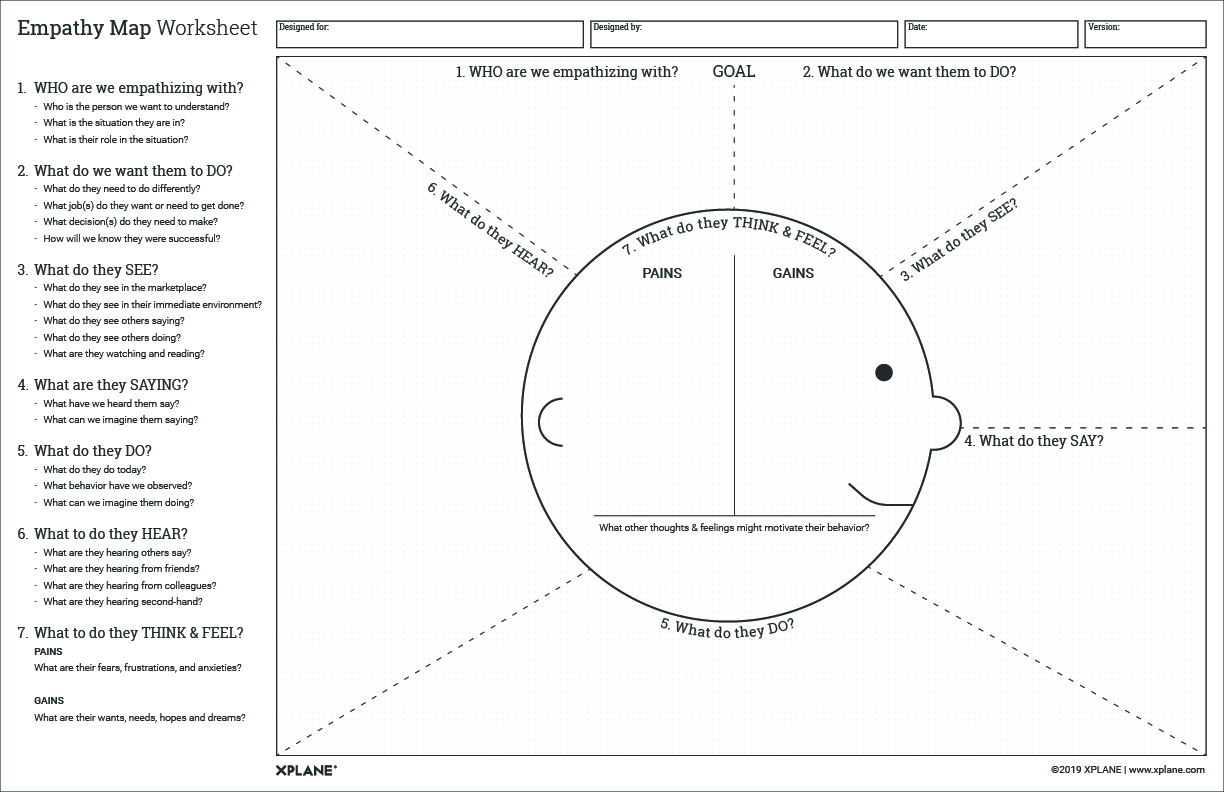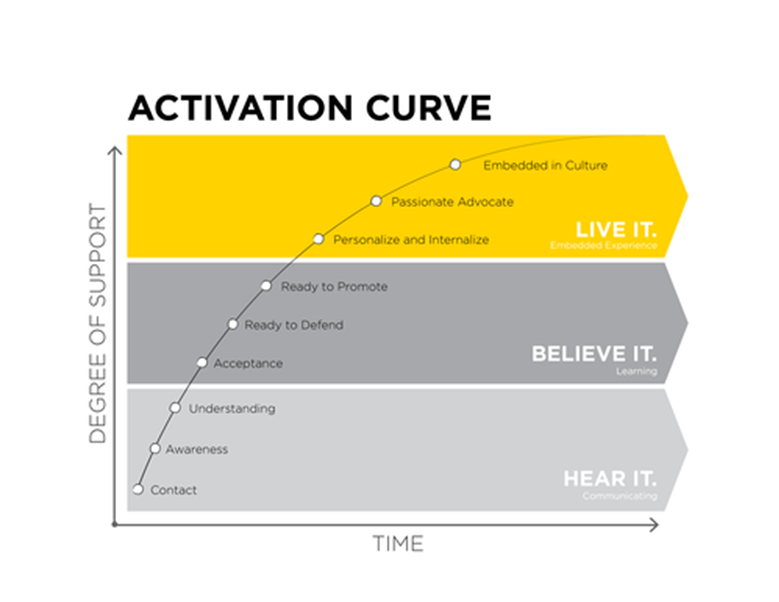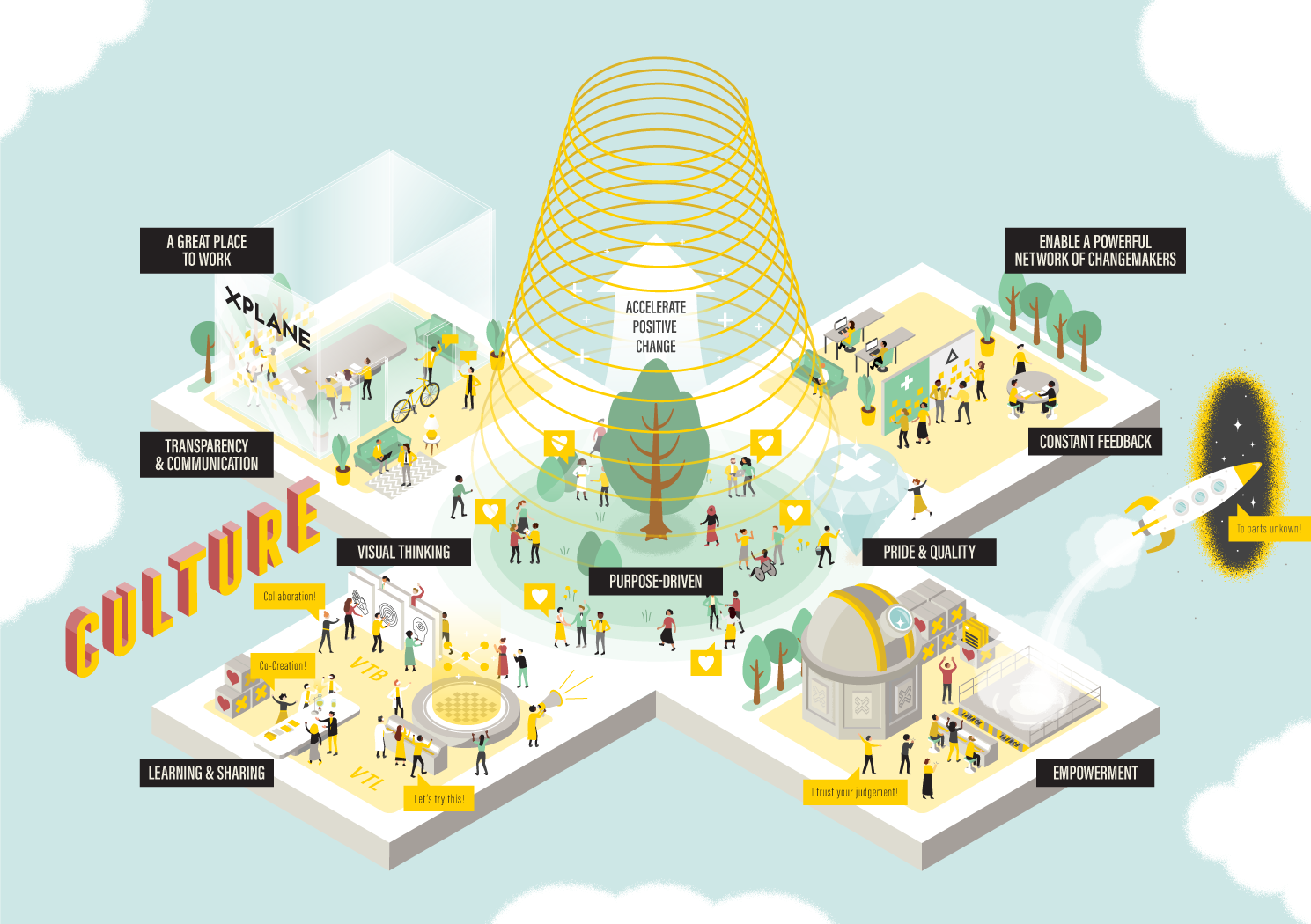How business leaders can share their vision of the future and help workers move from their bustling world to the world leaders want to build.
It can be lonely at the top.
When you lead an organization, you often occupy a singular spot at the peak of a mountain. From that vantage point, you can see far into the distance and know where you’d like your organization to go next.
Meanwhile, the rest of the company is hard at work below the timberline down in the hills and valleys of what’s happening day-to-day. They’re doing the work that keeps the company running—and are far from the mountaintop and what it reveals of the future.
As a leader, how can you share a vision of the future that helps workers move from their bustling world to the world you want to build?
The Communication Challenge
It’s not an easy proposition.
Leaders are often ill-equipped to communicate their vision simply because they’re living in the future.
While they’re on top of the mountain looking at what’s ahead, the rest of the organization might not be able to see the mountaintop—much less scale the mountain.

It’s incumbent on leaders to help people see how what they’re doing will get them up the mountain where they can glimpse the future too.
Yet when leaders are unable to communicate where the organization is headed, people start to chatter.
“Management is not being clear.”
“There’s no transparency around where we’re going.”
This counterproductive cycle of chatter creates a backlog of negative behaviors, leading to an atmosphere of mistrust. Too often, workers blame leadership for poor communication, not realizing that their discontent is part of the problem.
The Golden Rules of Effective Communication
To close this communication gap and plainly share the promising view from the top, good leaders follow some golden rules of effective communication.
Build trust. According to the Harvard Business Review, there are eight management behaviors that foster trust. It comes as no surprise to us—we’ve seen the benefit when working with our clients—that one of those eight is showing vulnerability. Good leaders are open, accessible, authentic, and willing to admit when they don’t know something. Vulnerability levels the playing field and creates a trusting atmosphere. “Asking for help is effective because it taps into the natural human impulse to cooperate with others,” notes Paul J. Zak, author of “The Neuroscience of Trust.”
In high-trust companies, people report 74% less stress, 106% more energy, 50% higher productivity, and 76% more engagement at their jobs than those at low-trust companies.
It’s not surprising, then, that they also are 70% more aligned with their companies’ purpose.
Show empathy. Good leaders are able to put themselves in others’ shoes to understand the problems others face—and why it may be difficult for people “in the trenches” to relate to a vision that doesn’t seem to tie into what they’re doing today. Good leaders use empathy to reach people where they are.
At XPLANE, we use our Empathy Map Worksheet to increase awareness of the perspectives and feelings of others, which can open up previously blocked channels of communication.

Leave no one behind. This relates to empathy. Good leaders realize that people in an organization are at different levels of understanding when it comes to seeing the future, understanding how they fit in, and participating in making it happen.
Some people may be further up the mountain, so to speak, while others have no line of sight.
To get everyone on board, leaders need to help people hear, believe, and subsequently work for the future we see.

Tell stories. Every organization has a story or two to tell. Shared stories create a sense of connection and collaboration that mobilize individuals and move organizations forward.
Why are stories so powerful?
Storytelling is part of our evolution as human beings. When we tell stories at work, we tap into a deeply rooted receptivity to stories that helps us strategically communicate important information that helps our organization survive and grow.1
Use visuals. Many leaders love to use broad terms such as “synergy,” “collaboration,” and “unified sales structure.” While these words work in their high-level world, the words often fall flat among the ranks.
Good leaders know that effective communication involves more showing and less telling.
At the heart of how XPLANE works is Visual Thinking, which entails communicating through visuals.

Pictures not only enhance retention, but they create interest. Over the years, XPLANE has helped many organizations create vision maps that show in detailed, fun, and dynamic fashion where a company is going. Below are examples of our 2020 vision map.

(XPLANE’s 2020 Vision)

(XPLANE’s 2020 Strategy)

(XPLANE’s 2020 Culture)
We’ve found that when people see these maps, there’s a huge uptick in understanding. Sometimes, they even see for the first time how what they do ties into the whole. This is essential to guiding people up the mountain and moving the organization forward.
Co-create. If you need people to better understand a vision, starting with an unfinished picture and asking them to help finish the drawing can be highly effective.
Co-creation is a powerful catalyst for buy in and alignment, ownership and accountability. When people contribute to a drawing, they see themselves in it—and are far more likely to help make what’s before them real.
Be authentic. A good leader’s messages and storytelling are authentic. People can sense a tall tale. When an executive’s communication feels inauthentic, it can generate resentment and increase the gap between leaders and their people. Authenticity creates goodwill, connection, and openness—all necessary to move an organization forward.
Sharing the View at the Summit
By following these rules of communication, leaders can begin to galvanize change, inspiring people to see and believe—then move toward—their vision of the future.
This just goes to show that it doesn’t always have to be lonely at the top.
1Kathy Caprino. “How Storytelling Can Improve Business Communication and Transform Workplaces.” Forbes. March 23, 2018. Accessed January 25, 2019.
____________
If you’d like to learn more about some of the concepts presented in this post, consider checking out these great resources:
Webinar Insights
Now that you’ve learned more about how to share your vision, practice designing a strategy activation plan in our latest webinar recording, “Practical Tools to Devise a Strategy Activation Plan.” In the session, you’ll be guided through the process of understanding stakeholders, identifying barriers to change, and designing communications and learning initiatives to move your team toward understanding, alignment, and execution.
In-Depth Blog Posts
Dig deeper on some of the concepts presented here by checking out the following XPLANE blog posts:
